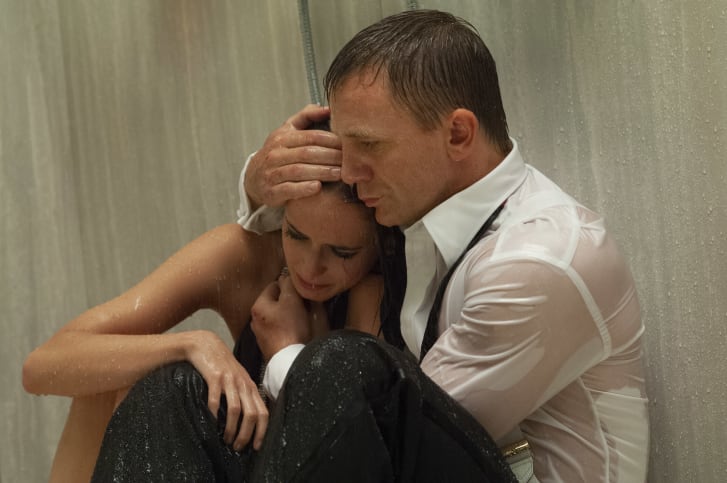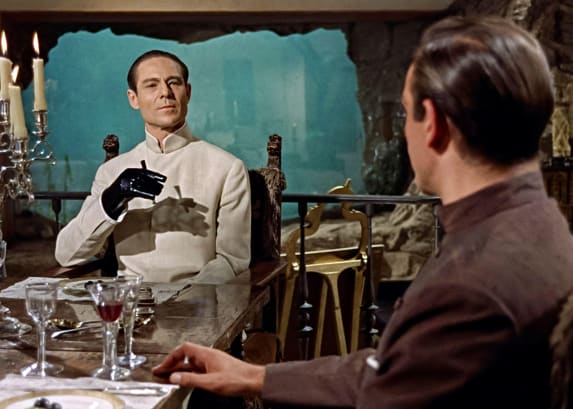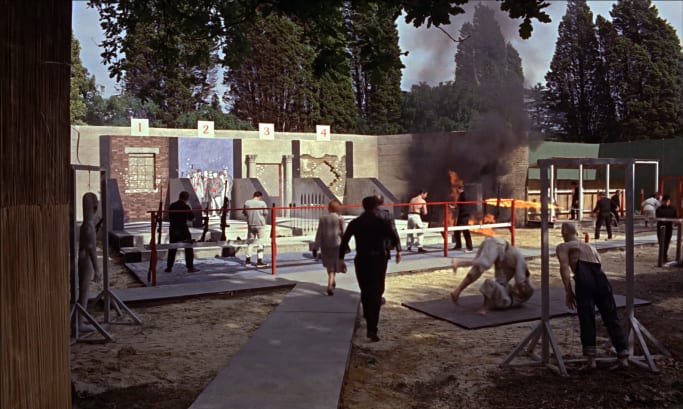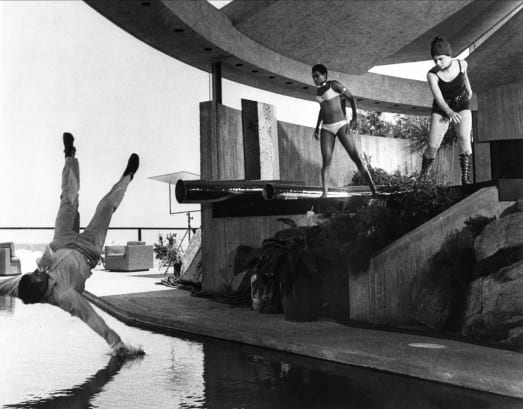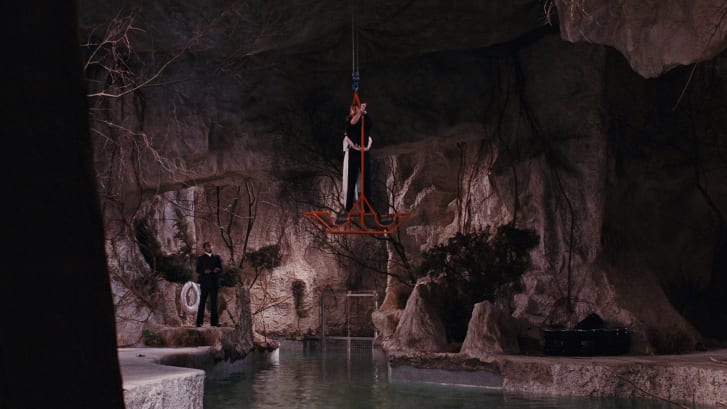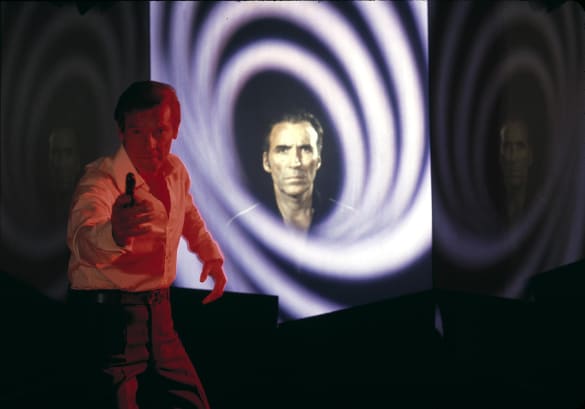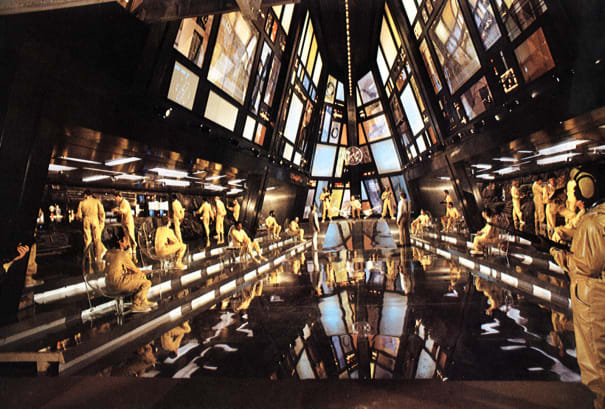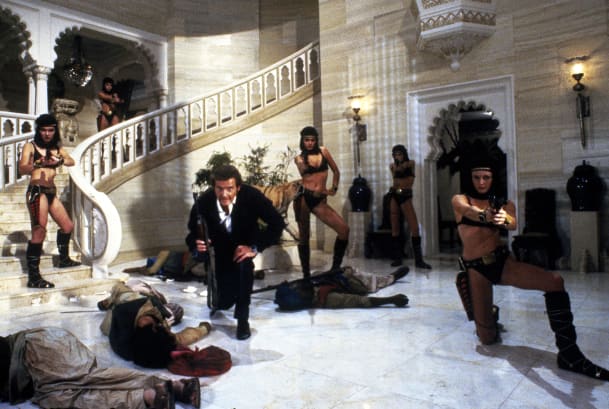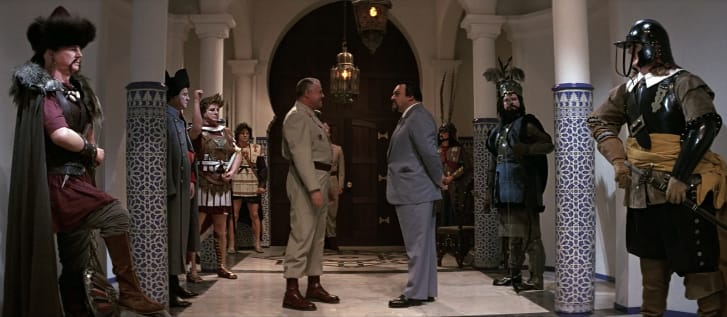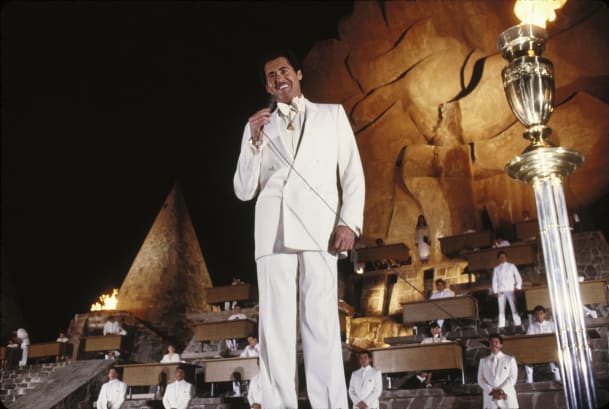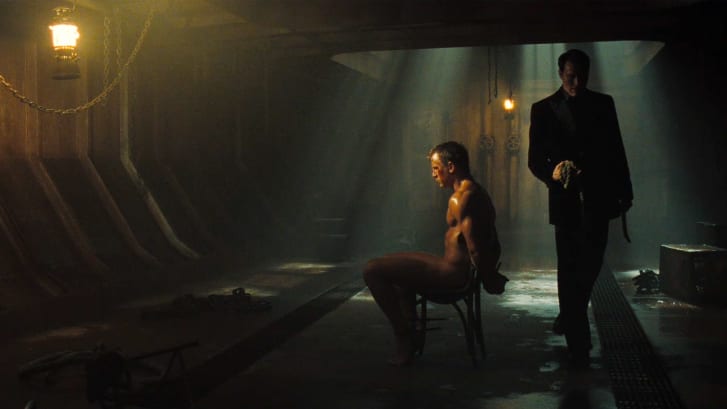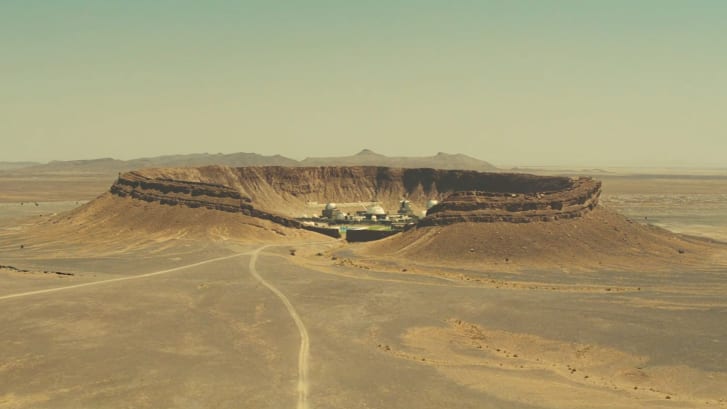How Daniel Craig’s body became his James Bond signature
Crab Key, “Dr. No” (1962) — Dr. No’s compound was situated on the fictional island of Crab Key, off the coast of Jamaica. Its underground living quarters had ostentatious touches — a glass wall with underwater views, Goya’s portrait of the Duke of Wellington — and all the home comforts to wine and dine Bond. But the island also contained a secret lab. It was from there that Dr. No, the SPECTRE agent with the metal hands, planned to use an atomic-powered radio beam to interfere with NASA rocket launches.
In real life Ocho Rios, Jamaica was used for the shoot, with novelist Ian Fleming’s villa Goldeneye not far away. For the interiors, shot at Pinewood Studios outside London, production designer Ken Adam used back projection to imitate the sea and dressed the living quarters with some of his own antique furniture, according to Meg Simmonds, author of “Bond by Design: The Art of the James Bond Films.” Credit: BFA/Alamy
‘Embodying Bond’s journey’
